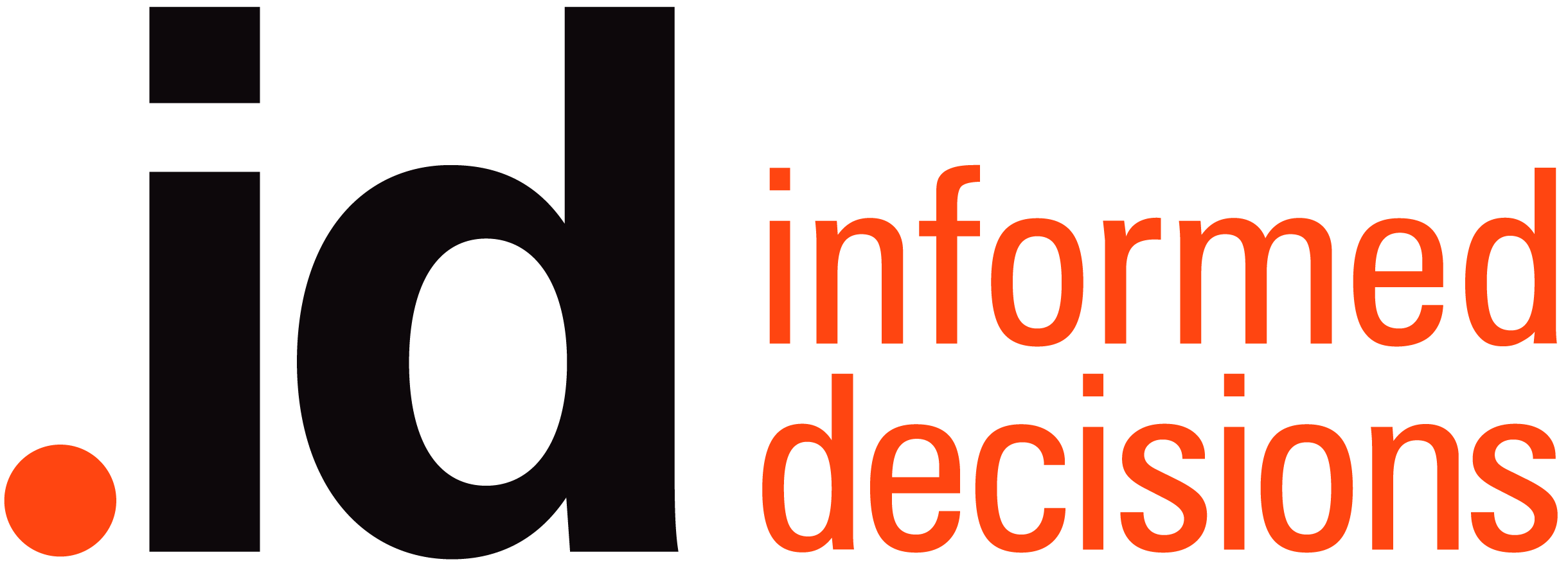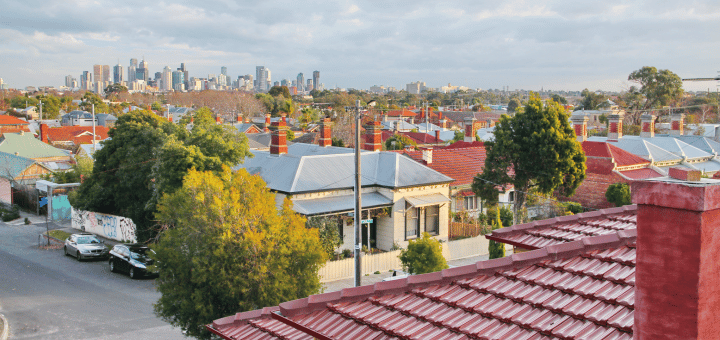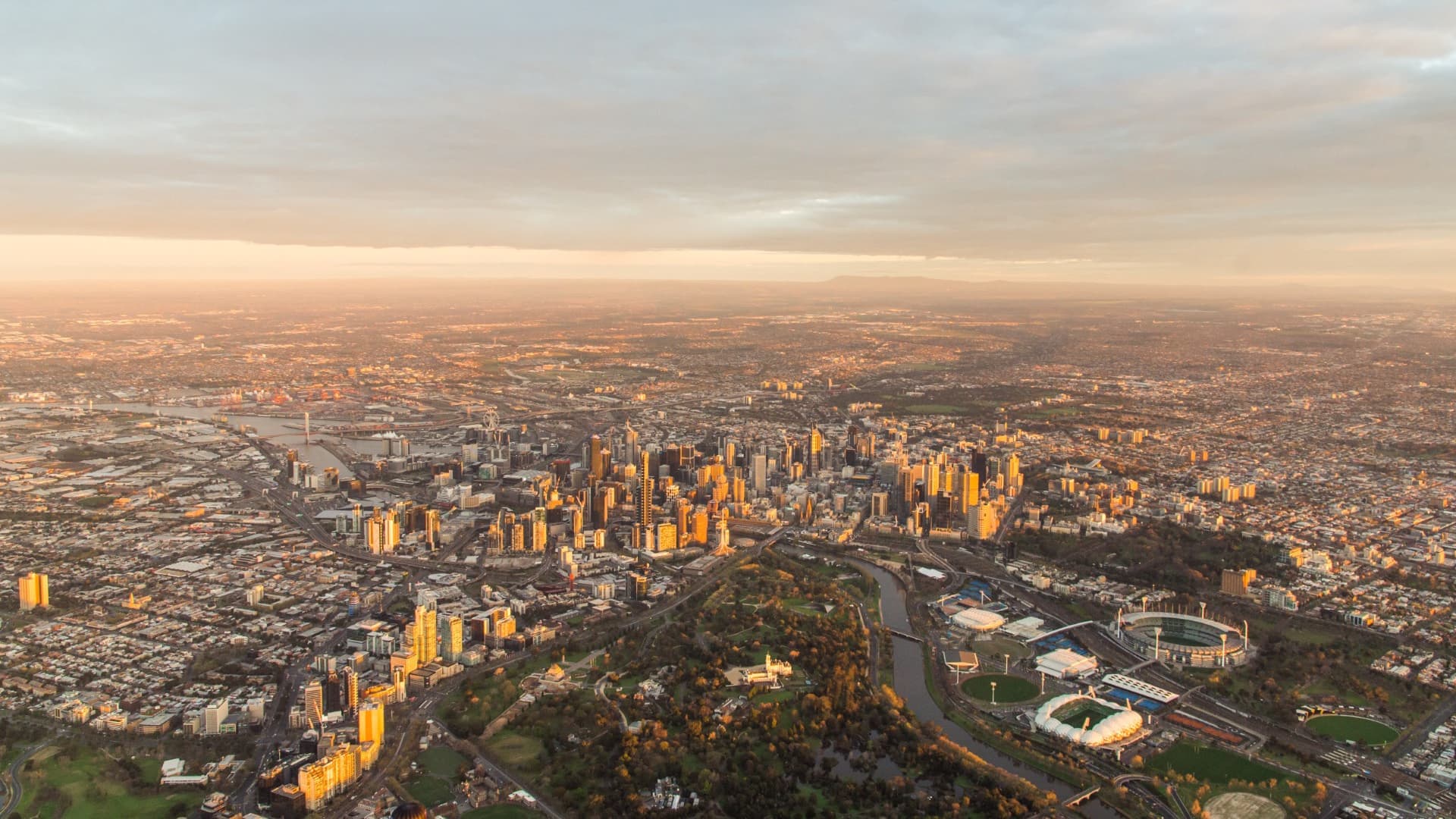BLOG
Big loans, small deposits: where buyers are stretching further
Big loans, small deposits: where buyers are stretching further
How affordable is it to buy a home in your area? Obviously this has a lot to do with the house prices, which vary enormously from place to place in Australia, and have increased in most places substantially over the last decade. But that's not the whole story. Affordability for individuals can come down to how long they have been in the housing market and whether they have sold and repurchased with a large deposit.
In our housing monitor, housing.id, we make assumptions about affordability based on people being first home buyers, with a 20% deposit. But not everyone has as much as 20% while some have much more than that, particularly in areas that are more "upgraders" or second-third home buyer areas. 20% is often used as a cutoff due to the need in many cases to pay lender's mortgage insurance, which increases the cost of buying.
These factors are really about the "typology" or role and function of place - and looking at the size of deposits, along with other socio-economic characteristics can really help understand who is living in an area and how that's changing.
Recently, PEXA and .id have published a new report looking at the level of deposit buyers have across the country. This is updated information for the 2024 year based on property settlements. And it's a fascinating read. You can see the whole report here.
Firstly a short recap of some terms. "LVR" means "Loan to valuation ratio". It's the percentage of the value of the property purchase which is provided by the loan. Normally loans over 80% of property value (ie. a 20% deposit excluding costs) require Lenders Mortgage Insurance (LMI) - that's an additional payment by the home buyer to insure the lender (note, not the borrower!) against mortgage default - really an insurance in case the bank can't get enough from selling your house at a mortgagee auction to cover the loan. As the report says, having someone go guarantor or a few government schemes can avoid the LMI in some cases (there have been recent policy announcements for the upcoming federal election touting an expansion of these schemes, with the government effectively going guarantor and allowing buyers to avoid LMI with as little as a 5% deposit).
So the other side of LVR is "DVR" - or Deposit to Valuation Ratio. That's just the percentage of the deposit itself, relative to property value. Eg. If I buy a house for $500,000, with a $100,000 deposit, that's a 20% DVR and 80% LVR and would just avoid LMI under standard conditions.
The report only covers NSW, Vic and Qld, the largest population states, because the information is only available for these at present - hopefully we'll be able to get data for WA soon as this has had such a large escalation in prices recently and this would be fascinating. WA data are certainly available on housing.id though - and there are three current subscribers - City of Joondalup, City of Vincent and City of Canning.
This summary table shows that among the 3 states profiled, NSW had an average house sale price way above Qld and Vic, but Vic had the lowest deposit. In fact the average LVR in Vic is just over the 80%. However, the proportion of loans requiring LMI was a little lower (likely a higher share of people using the government first home owners scheme and avoiding LMI with lower deposit). In all 3 states though, around half of all loans do require LMI, increasing the cost to the buyer.
Loans summary table - calendar year 2024
|
|
NSW | VIC | QLD |
| Median Deposit Amount | $136,088 | $87,747 | $101,754 |
| Median Sale Amount | $865,000 | $663,000 | $650,000 |
| Average DVR | 21.4% | 19.9% | 21.1% |
| Average LVR | 78.6% | 80.1% | 78.9% |
| Share of loans requiring LMI (%) | 50.20% | 49.80% | 56.20% |
| Volume of new residential loans | 137,514 | 136,830 | 138,693 |
Source: Pexa
These represent some of the wealthiest, highest property value areas in each state. They are clearly NOT first home buyer areas, with average deposits over $400,000 in many cases, and well outside LMI territory - most of these had deposit ratios around the 30% mark (that would still indicate a sizeable loan well over $1 million in many cases). We're talking places like Sydney's Northern Beaches, Melbourne's Bayside area and inner-east, and in Queensland, the hills west of Brisbane, plus canal estates on the Gold and Sunshine Coasts.
This map shows the average LVR by Local Government Area across the 3 states. Zoom in and find your local area:
The pattern is actually quite clear at the LGA level - the highest LVRs by LGA are actually in lower priced areas in regional parts of states. Many of these have only just enough sales to provide a reliable measure (and some are not shown due to very low sales numbers). This may show people pushed out of the housing market in our cities seeking more affordable housing in the regions. Or locals buying houses on low incomes with small deposits. The house prices in these areas mean that in a lot of cases, even with a small deposit, the overall loan size is relatively small.
Highest LVRs as a percentage by LGA, 2024 calendar year
| STATE | LGA | MEDIAN DEPOSIT AMOUNT ($) | LVR | DVR | SHARE OF LOANS >80% LVR |
| QLD | Longreach | $9,776 | 91% | 9% | 89.2% |
| QLD | Murweh | $12,425 | 90% | 10% | 81.8% |
| NSW | Cobar | $20,015 | 89% | 11% | 78.1% |
| NSW | Bogan | $13,735 | 88% | 12% | 84.0% |
| NSW | Narrabri | $35,438 | 87% | 13% | 74.3% |
| NSW | Hay | $27,373 | 87% | 13% | 75.9% |
| NSW | Lachlan | $25,443 | 86% | 14% | 65.1% |
| NSW | Leeton | $38,313 | 86% | 14% | 70.8% |
| QLD | Weipa | $40,304 | 86% | 14% | 71.9% |
| NSW | Parkes | $34,361 | 86% | 14% | 74.4% |
Source: Pexa
This trend is strongest in NSW, where there is the strongest push outwards from a very expensive Sydney into regional areas - so there are people seeking affordable housing in some of those smaller towns in addition to the locals buying there. Because of that, the trend of the highest LVRs being in remote-regional areas appears at the suburb/locality level in NSW, but only really at the LGA level in other states. For reference, the highest LVR in Victoria is West Wimmera Shire, which contains only 3,900 people, and is just outside this top 10 list.
The suburbs/localities (rather than LGAs) with the highest LVRs show different trends depending on your state. At this geographic level, in Victoria and Queensland, a mix of lower socio-economic areas on the urban fringe of major cities (dominated by first home buyers) make the top 10 list.
Here are the top 10 LVRs (lowest deposits as a %) data for Victoria:
|
SUBURB |
LGA | LVR | MEDIAN DEPOSIT AMOUNT ($) | MEDIAN SALE PRICE ($) | MEDIAN AGE | SEIFA IRSAD (2021 Census) |
| COBBLEBANK | Melton | 86.10% | $57,704 | $623,500 | 29 | 975.4 |
| KINGS PARK | Brimbank | 86.00% | $70,822 | $610,000 | 38 | 845.9 |
| FRANKSTON NORTH | Frankston | 85.60% | $52,274 | $591,000 | 37 | 837.9 |
| WOODSTOCK | Whittlesea | 85.50% | $26,438 | $275,000 | 53 | 992.0 |
| HAMPTON PARK | Casey | 85.10% | $73,679 | $647,000 | 33 | 907.2 |
| CRANBOURNE | Casey | 85.10% | $69,000 | $625,000 | 35 | 906.3 |
| CRANBOURNE NORTH | Casey | 84.90% | $76,014 | $700,000 | 32 | 972.9 |
| GLADSTONE PARK | Hume | 84.80% | $85,021 | $710,000 | 42 | 953.0 |
| RED CLIFFS | Mildura | 84.70% | $38,069 | $367,500 | 41 | 896.7 |
| SEABROOK | Hobsons Bay | 84.60% | $83,401 | $735,000 | 37 | 1,006.0 |
These are - with one exception - urban fringe areas of Melbourne, which are house-and-land first home buyer areas. Places like Cobblebank, Woodstock, Cranbourne North have a large amount of new housing which is relatively affordable. Also on the list, established suburbs such as Seabrook near Altona, Kings Park in Brimbank, very low-socio-economic Frankston North, and the regional area of Red Cliffs near Mildura (also with a lot of new housing).
The main linkage here is that these areas mostly have quite a young age profile, and they are relatively socio-economically disadvantaged. The SEIFA index of relative Advantage and Disadvantage has an average for Australia of 1,000 - so in this list, only Seabrook falls above the Australian average - all the rest are more disadvantged (and that only just).
So the areas with the lowest deposits in Victoria are mainly areas where young families are seeking to buy their first home at a relatively low price on the urban fringe of Melbourne. Yes, the LVRs are higher in some remote regional LGAs, but the number of sales in these areas are lower than the individual suburbs shown here.
As an example, the City of Casey features prominently, with 3 suburbs in the top 10 highest LVRs. This is the most populous LGA in Victoria and subscribes to housing.id which shows up-to-date information on affordability by suburb. The suburbs of Hampton Park, Cranbourne and Cranbourne North are typologised as first home buyer areas - they have for many years provided affordable housing to those building their first home via a house and land package. But in recent years, they have become unaffordable for first home buyers as well. It's not too bad if you're on a moderate income with the elusive 20% deposit - 69% of sales in Hampton Park in 2024 were affordable to you (noting that based on the above, the majority of buyers do NOT have a 20% deposit, and many have to deal with LMI as well - also moderate incomes in Melbourne are anything up to $135k p.a.). When we look back in time on the housing monitor - as recently as 2020, nearly 100% of housing sales in Hampton Park were affordable on a moderate income, with lower interest rates. And for low incomes (up to about $90k p.a. in Melbourne) affordability for the first home buyer has fallen to just 3% in Hampton Park in 2024, pricing many families out of the market there.
Here are the top 10 LVRs (lowest deposits as a %) for Queensland:
|
SUBURB |
LGA | LVR | MEDIAN DEPOSIT AMOUNT ($) | MEDIAN SALE PRICE ($) | MEDIAN AGE | SEIFA IRSAD (2021 Census) |
| SLACKS CREEK | Logan | 86.20% | $59,700 | $658,000 | 35 | 859.7 |
| SOUTH MACKAY | Mackay | 85.60% | $52,296 | $420,500 | 39 | 912.1 |
| CURRAJONG | Townsville | 85.40% | $56,242 | $451,750 | 39 | 926.2 |
| ROSSLEA | Townsville | 85.20% | $42,177 | $313,000 | 35 | 968.6 |
| GOODNA | Ipswich | 85.10% | $57,121 | $550,000 | 33 | 854.0 |
| KINGSTON | Logan | 85.10% | $70,000 | $620,000 | 32 | 799.2 |
| EAGLEBY | Logan | 85.10% | $61,381 | $542,722 | 37 | 841.3 |
| LOGAN CENTRAL | Logan | 85.00% | $57,028 | $522,500 | 32 | 752.0 |
| HEATLEY | Townsville | 84.90% | $53,267 | $440,398 | 40 | 869.6 |
| SPRING HILL | Brisbane | 84.90% | $59,905 | $550,000 | 32 | 1051.2 |
This looks very similar to the Victorian list, but with a bit more of a regional flavour. This is to be expected as Queensland is the most dispersed state in terms of the percentage of population living outside the capital. Nevertheless 6 are in the Greater Brisbane area, though only one - Spring Hill - is in the City of Brisbane. This is also the only one in the list with a SEIFA score above the national average. All the rest are low. In the case of some of the suburbs of Logan (Kingston, Logan Central) these are very low SEIFA areas (bottom 5% of the nation) and among the most affordable housing areas in South-East Queensland (median sale prices still over $500k though). Outside Brisbane, Townsville and one area in Mackay feature prominently - again these are lower socio-economic areas with housing growth.
Three of the suburbs in this list are in Townsville - Rosslea, Currajong and Heatley - all are among the more disadvantaged suburbs in the LGA, which also subscribes to the housing monitor. Heatley is a bit older, with retirement accommodation, but all 3 have a high share of renters as well as those with a mortgage. They aren't the typical fringe first home buyer areas, but they are among the cheaper areas in Townsville, with median prices below the Townsville median of $460,000. There has been a similar drop-off in affordability here, as with the areas in Melbourne. However much of the housing stock is still affordable on a low income. In 2024, in Heatley, 62% of housing stock was affordable on a low income (<$74k in regional Qld), though this had fallen from 100% in 2020. Townsville is a little different from many areas in that it's more affordable to buy than rent - in Heatley in 2024, only 49 of 100 rental listings were affordable for a low income renter at 30% of their income.
Here are the top 10 LVRs (lowest deposits as a %) for New South Wales:
| SUBURB | LGA | LVR | MEDIAN DEPOSIT AMOUNT ($) | MEDIAN SALE PRICE ($) | MEDIAN AGE | SEIFA IRSAD (Census 2021) |
| COBAR | Cobar | 88.60% | $20,477 | $248,000 | 36 | 932.2 |
| NARRABRI | Narrabri | 87.90% | $38,350 | $420,000 | 39 | 942.7 |
| PLUMPTON | Blacktown | 86.70% | $82,701 | $880,000 | 34 | 987.7 |
| SINGLETON HEIGHTS | Singleton | 86.50% | $55,300 | $630,000 | 33 | 922.3 |
| LEETON | Leeton | 86.40% | $38,501 | $390,000 | 38 | 918.6 |
| PARKES | Parkes | 86.30% | $36,539 | $440,000 | 39 | 920.7 |
| SOUTH TAMWORTH | Tamworth | 86.30% | $45,474 | $431,000 | 37 | 822.6 |
| WARATAH WEST | Newcastle | 86.20% | $75,215 | $780,000 | 31 | 986.3 |
| BERESFIELD | Newcastle | 86.20% | $55,598 | $629,000 | 39 | 880.3 |
| WELLINGTON | Dubbo | 86.10% | $23,974 | $315,000 | 41 | 828.6 |
The NSW areas are quite different to the other two states, which is why I've left it to last. The LVR percentages are higher - number 10 on the list is only equivalent to the highest in Qld or Vic. And it's the only state where regional areas dominate the top 10 list at the suburb level (as all 3 states show at the LGA level). Just one of the top 10 areas in NSW is in Sydney - that's Plumpton in the Blacktown area - a fringe growth LGA of Sydney and a first home buyer area. All the others are in Regional NSW. And every one has a SEIFA score below the national average (defined as 1,000). Many of these regional areas not major growth areas. Places like Parkes, Leeton and Narrabri have stable or declining populations. The presence of these on the list is quite telling. This likely follows the trend of movement out of Sydney seeking more affordable housing (Greater Sydney had a net migration to other parts of NSW of 16,000 in 2023-24, though in earlier years particularly during COVID it was approaching 30,000). Some people are moving well away from Sydney to these more remote areas of the state, where housing is quite low priced, but they are doing so with very small deposits and large loans relative to the value of the property (and probably pretty low incomes). As above with the LGA list - the loans aren't large in absolute terms because of the low house prices - eg. Cobar, #1 on the list only has a median of $248,000. And a median deposit of only $20k. It's also worth noting that the number of sales are fairly small in some of these remote areas.
Other areas are in larger regional centres like Newcastle, where the fringe areas of the City have taken on the first home buyer role ahead of areas on the fringe of Sydney due to affordability. The City of Newcastle also has housing.id. This shows that Beresfield is one of the most affordable areas in the City - nevertheless only 13.9% of all housing sales were affordable to a moderate income first home buyer with a 20% deposit in 2024 - as prices have escalated and higher interest rates have kicked in - declining from 100% in 2020. This is a huge fall in affordability replicated across NSW, and is most likely the reason that LVRs are generally higher in that state.
CONCLUSION
Generalising only a little - Sydney is almost unaffordable to first home buyers now, with anyone on a low-moderate income now priced out of the market even on the urban fringe. So many who would previously have bought in Sydney are now looking elsewhere, or are going into housing stress to buy within the Greater Sydney region. If they are moving, there is a dual trend of movement out of Sydney into regional areas of NSW, where they are buying with small deposits. They are also moving to interstate capitals, particularly Brisbane, with every year bringing a net movement of people from NSW into SE Queensland.
The trend of movement out to regional areas does exist in the other two states as well, but shows up at the LGA level on small numbers of loans, not so much at the suburb level.
So the dataset is quite clear - the places with the lowest deposits and highest loan level equate to lower socio-economic areas favoured by first home buyers who are looking for the most affordable place to buy a home. These are a combination of relatively more affordable urban fringe areas in Melbourne, Brisbane and Townsville, and regional towns in NSW, where first home buyers are largely priced out of Sydney.
First home buyers with small deposits can no longer afford anywhere in Sydney, while they can still afford some parts of Brisbane and Melbourne.
Explore the housing prices and affordability characteristics of your local area using housing.id. If you don't have housing.id for your area, please contact us for more information.
Glenn Capuano - Census Expert
Glenn is our resident Census expert. After ten years working at the ABS, Glenn's deep knowledge of the Census has been a crucial input in the development of our community profiles. These tools help everyday people uncover the rich and important stories about our communities that are often hidden deep in the Census data. Glenn is also our most prolific blogger - if you're reading this, you've just finished reading one of his blogs. Take a quick look at the front page of our blog and you'll no doubt find more of Glenn's latest work. As a client manager, Glenn travels the country giving sought-after briefings to councils and communities (these are also great opportunities for Glenn to tend to his rankings in Geolocation games such as Munzee and Geocaching).









